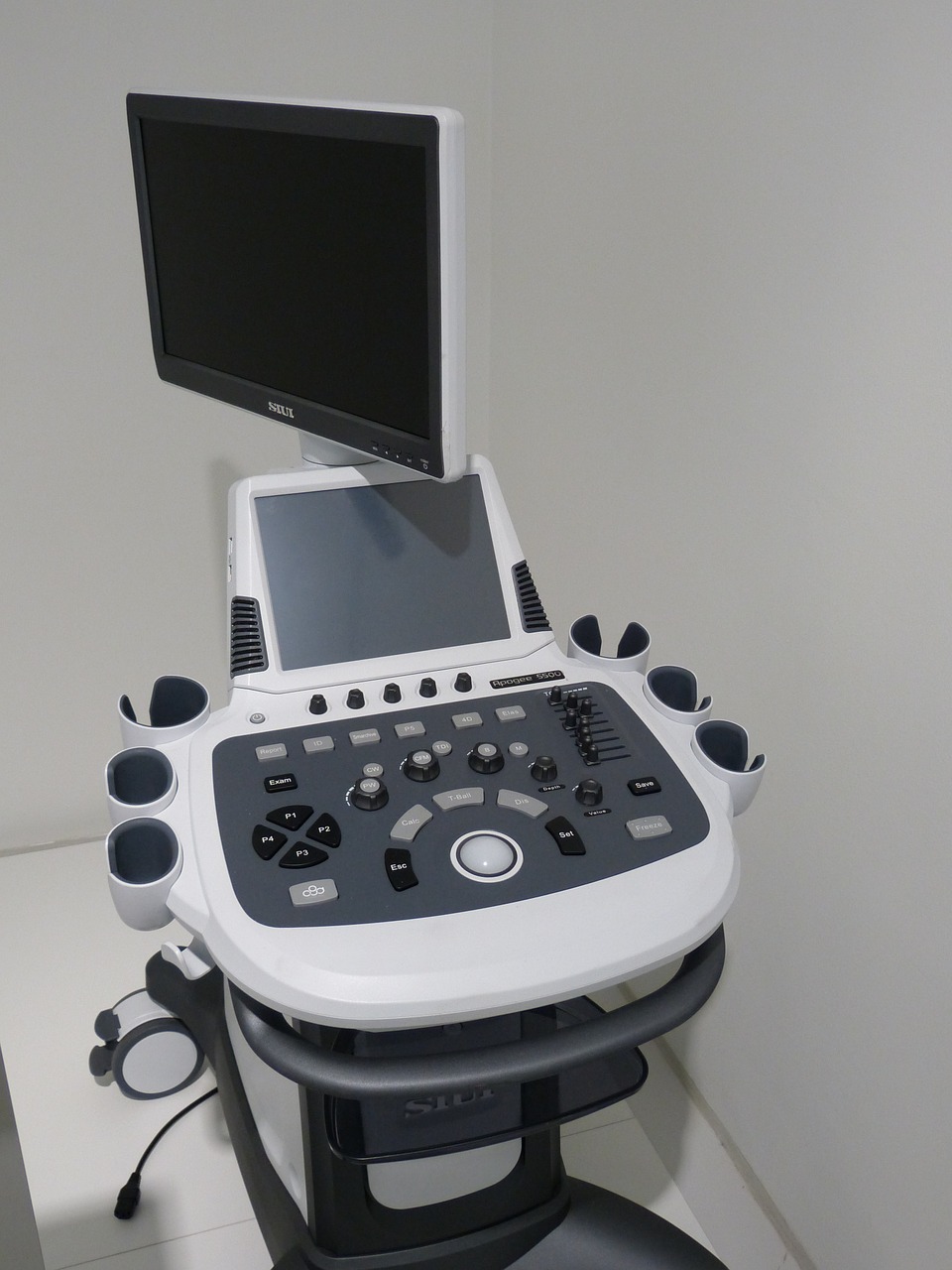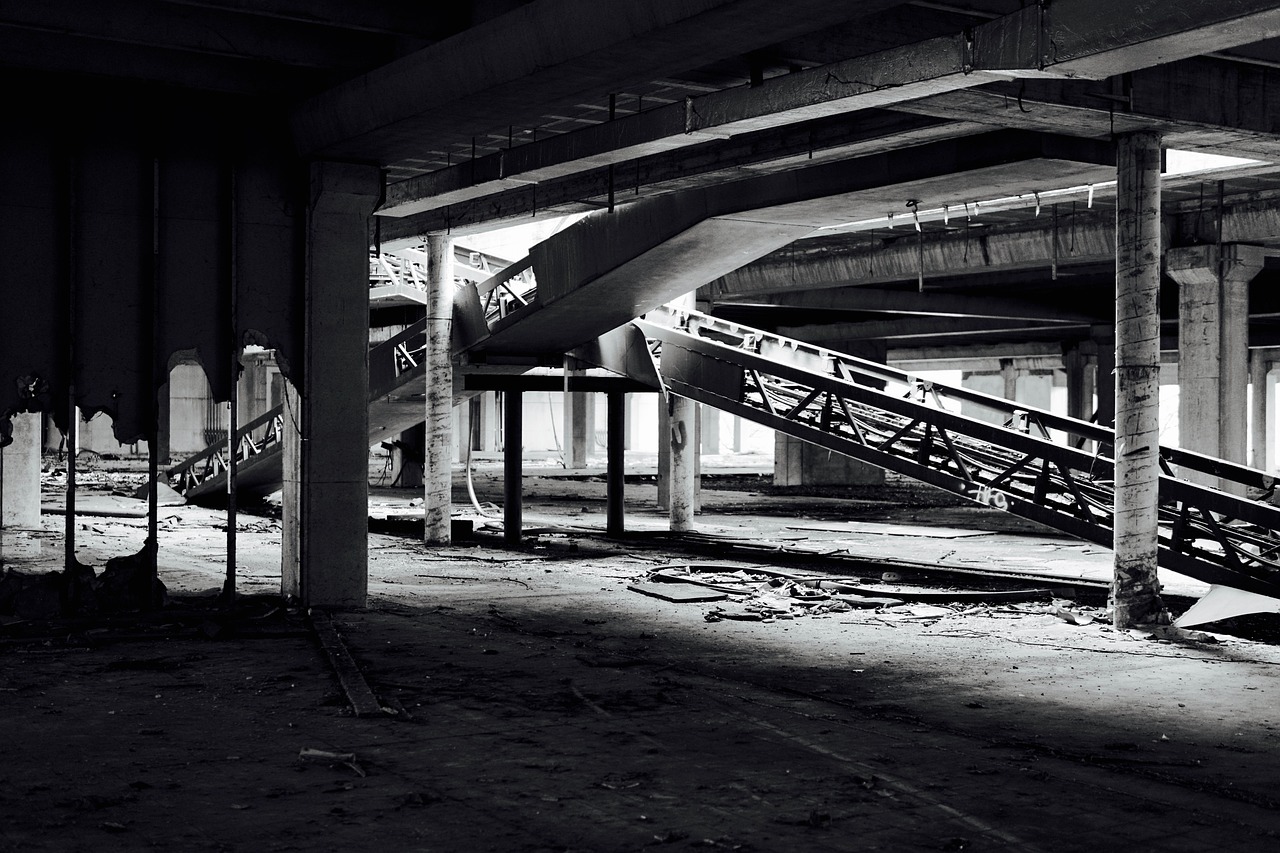
Question:
Hi! I was wondering what source you would recommend as the best to teach ultrasound to radiology residents?
Thank you!!

Hi! I was wondering what source you would recommend as the best to teach ultrasound to radiology residents?
Thank you!!

Hello,
I am a pathology intern halfway through the year. Now, I am confident that I have made a terrible mistake. Radiology was my dream residency throughout medical school. However, due to my spouse and I entering the couple’s match, I convinced myself that pathology was a better strategic option. I deeply regret not following my interests. And now, I feel that I may be trapped in this field forever, wishing I had stayed in my first course. I have no academic limitations that would have prevented me from being accepted into radiology had I applied. My question for you: Would switching from pathology to radiology be possible? And if so, how would you recommend I approach this difficult situation? Thank you very much for your time and advice.
Regards,
Stuck in Pathology
It is still possible to switch to radiology. All is not lost. But, at least, it will involve an extra couple of years of residency. Unfortunately, the ACGME has changed the rules for what counts as a clinical year for radiology residency. At one time, you could apply pathology toward the “clinical year.” Per the ACGME, you must take another internship year in preliminary medicine, preliminary surgery, ob-gyn, emergency medicine, neurology, or a transitional clinical year. The biggest problem you may encounter, assuming that you have not applied this year already, is that you will have to wait until the following year to apply to prelim medicine and radiology. That will give you two years in pathology. When you take that third year of preliminary medicine, you will already have three years of residency before radiology residency. Due to Medicare funding issues, some programs may not have funding for your entire residency. Some programs will care about that more than others. But it shouldn’t prevent you from applying.
However, you have a spot in a pathology program right now. So, if you applied for both a clinical year and a radiology slot simultaneously and didn’t get into a program, you would still have your current pathology residency position available as a backup. So, if you still desire radiology, it is worth a try regardless of the “funding issues.” It’s a bit of a longer path for you to get into a radiology residency, but certainly not impossible.
Also, I would recommend getting to know the radiology department faculty at your current institution by completing an elective rotation or stopping by to talk to the program directors. If they like you, that may also help to get you an interview and recommendations for a radiology residency. Knowing someone personally is always better than a blind bid for a residency slot.
Good luck,
Barry Julius, MD
Do you believe in the common cliché, “A picture is worth a thousand words?” And, are you interested in how to apply it to the interview process? Then, take a look at the recent paper in Academic Medicine entitled The Ethical and Legal Conundrum Posed by Requesting Residency Applicants to Submit Photographs of Themselves, and the Medscape article of an interview with the same author of this study in an article called Are Residency Application Photos Used for Discrimination? Both pieces made lots of interesting points about the use of photographs for interviewing residents. However, I found the discussion in both of these articles to be a bit unsettling. And, let me show you why.
Well, take a look at the following quote as one of the final statements in the interview as a summary for the articles, “The photograph does not provide useful information that is necessary for selecting qualified candidates. Unless there’s a compelling argument for why you need a photograph, which so far no one has brought to me, I think it is unnecessary. Everyone I’ve shown the article to has agreed with our point of view. I am concerned that this is a possibly illegal practice, that it can cause people to be discriminated against, and that it is unfair.”
Let’s step back for a moment and think about this statement. At first glance, I initially agreed with the concept behind the article. Programs should never use a photograph to prescreen candidates. For instance, let’s say that one of the screeners in a program happened to hate nose rings. And, the image of an applicant showed her wearing a nose ring. Then, we might have excluded this applicant from the interview pool not based on credentials, but rather a nose ring on a photograph. It could theoretically work that same way for race or ethnicity. That should never happen. I get it.
But, let’s take it to the next level. Once applicants have made it through the prescreening process and have arrived at our site for an interview, pictures can be beneficial to the applicant and the process. We’ve already seen the candidate. And, every time I look at a picture of the applicant, it jogs my memory about the person, the conversation, and the time. Often, the picture saves the day since so many interviews on a busy day can blur the lines between the candidates. Why would you want to get rid of such a tool?
Furthermore, we all have eyes and faces. You can’t ask all applicants to wear masks to an interview. Likewise, you cannot blindfold all the interviewers. And, if the picture is not biased enough, what about our voices? I mean everyone has a distinct accent. Uh oh, now applicants must wear sound mufflers to make sure that we cannot determine their identities. And, what about our clothes? Our clothes can give away our culture and attitudes. Why don’t we have all applicants arrive at our interviews wearing the same required outfit? I think you get the point, but you can take anti-bias precautions to an extreme that no longer makes sense. And, that’s where both of these articles went.
Applicant photographs do not belong in the prescreening process. We should choose who we interview based on merit alone. Perhaps, we should look at these pictures only after we have selected the candidate for an interview.
However, I believe these papers over-sanitize the interviewing process and residency program use of photographs. We are not perfect in making decisions about our candidates. And, we all have our innate biases. But, we should not erase the interview pictures from the applicant’s record just because it may affect our judgment. We need our judgment to decide who we should choose for our programs. Let’s not take this anti-bias point too far!

Greetings, could you elaborate on these words ”(Artificial intelligence) will profoundly affect all of our careers, for better or FOR WORSE” and ”have more to gain and MORE TO LOSE”.
I am asking because, in the above text, you’ve written only about the good things about AI, while with these words, you’re also implying bad things about it, but I, as a reader, don’t know about them as you haven’t listed them.
I am a doctor from Europe whose first specialty choice is radiology, but this artificial intelligence surge is making me think twice about it. Everything I read, including your piece, is a 2-way street ala. ”AI is great, but you must adapt to it.”. The end. Could somebody please tell me HOW I will have to adapt and what the BAD things about AI in the radiology field are? It’s freaking me out! Radiology, as it is now, is a fantastic specialty, but I don’t want to be jobless and incompetent 10,15,20 years from now. It’s a life’s decision, and I have exactly ten days to decide!!
Thanks,
Worried Applicant
————————————————————–
You are not alone in worrying about the future of radiology and AI. However, after attending the RSNA meeting and talking to colleagues, AI will not take over a radiologist’s job entirely for a long time (if ever). That aside, AI technology may allow fewer radiologists to do the same amount of work that we do right now. Improving triage, artifacts, and integration will make the radiologist’s job easier.
Why do I say this and not worry about AI taking over the world? First, the ability of an algorithm to detect something is only as good as the programmer, the number of data points, and the quality of the data. However, programmers have not optimized the algorithms. The data points are too few. And the quality of the data is not uniform. So, I don’t believe that will happen for many, many years from now.
Moreover, deep learning algorithms still have difficulty distinguishing simple solitary findings on a plain film, such as pneumothorax (often mistaken for chest tubes), let alone all the findings on a chest film. Therefore, I don’t believe the interpreting programs can independently function.
More importantly, companies will not want to accept the consequences of the liability of missing findings on films that go unchecked by a radiologist. So, I see AI as more of a team effort instead of a radical upheaval of all radiologist’s jobs. Let’s spread the liability risk!
With the advent of any new technology, we will see our fair share of crashes, bugs, and technical problems. So, I believe that these would be the main downside. But I think the downside is reasonably limited overall. My advice- if you like radiology, you should go for it. If I were deciding on a profession today, I would not let my fears of AI dissuade me from choosing the radiological field.
My two cents,
Barry Julius, MD
I thought it would be interesting to informally poll my residents to find out their favorite radiology book by residency year and share the information with the readers of the website. Why? First of all, I figured many readers have a vague idea of what books to read, but sometimes they purchase radiology books without checking out what their colleagues liked the most. Second, I performed a brief survey by residency year to get a more specific idea about what you may want at your stage of residency. And finally, I was hoping to find a few patterns (which I did).
Well, these are the basics about what I found. Core Radiology was the only book that all years found to be useful. Brandt and Helms and Felson’s were popular in all years except the 4th year. Otherwise, there is a smattering of favorites throughout all 4 years of residency.
Check out the results from my informal radiology book poll (the first of its kind on this website!) at the bottom of this blog in order of popularity for each residency year.
And lastly, I thought it would be a good idea to also have you, the reader, take a survey to determine which books were your favorites. If we gather enough data, we can create another list compiled from all my readers. I think that this information would also be helpful to decide upon which books to read. So, fill out the survey at the bottom of the page to give your opinion!
So, now I present you a list of the results from my informal poll with links to the same books on Amazon (where I am an affiliate!)
Crack The Core Exam, Prometheus Lionhart
The Requisites: Vascular And Interventional Radiology, John Kaufman and Michael Lee
Fundamentals of Pediatric Radiology, Lane F. Donnelly
Fundamentals of Body CT, W. Richard Webb, William E. Brant, and Nancy M. Major
Felson’s Principles Of Chest Roentgenology, Lawrence R. Goodman
Arthritis in Black And White: Expert Consult, Anne C. Bower and Donald J. Flemming
Essentials of Nuclear Medicine And Molecular Imaging, Fred A Mettler, Jr, and Milton J. Guiberteau
Fundamentals of Skeletal Radiology, Clyde A Helms
Felson’s Principles Of Chest Roentgenology, Lawrence R. Goodman
Duke Review Of MRI Principles, Wells I Mangrum, et al.
Felson’s Principles Of Chest Roentgenology, Lawrence R. Goodman
Duke Review Of MRI Principles, Wells I Mangrum, et al.
Mayo Clinic Gastrointestinal Imaging Review, C. Daniel Johnson
Fundamentals of Skeletal Radiology, Clyde A Helms
Fundamentals of Body CT, W. Richard Webb, William E. Brant, and Nancy M. Major
Please fill out the survey below if you want to contribute your opinion to the “best of” radiology list of books for all readers of radsresident.com. If you cannot see the survey for whatever reason, you can click on the adjacent link that will take you directly to the survey site. Once again, thanks!!!
https://www.surveymonkey.com/r/RRLT759
For years and years, programs throughout the country have been utilizing the ACR in-service exam as a way to find out if residents have been keeping up with the material. And, from my experience, the correlation of the test with the Dow Jones Industrial Average on any given day is higher than that measure. And, many program directors believe the same. Now, for the past year or so, programs throughout the country have been utilizing the new Radexam to drill down on radiology topics to check the same measures. But, is this exam all that it cracked up to be and what do we know about it? What would be the optimal exam if I had my druthers? Should we be using any monthly or annual review to test residents at all? Or, perhaps, we should eventually overhaul the current core exam process in favor of Radexam-like alternative?
Unlike the previous in-service examination, the ACR created Radexam as a crowdsourced evaluation tool. Academic radiologists are constantly vetting the questions. Also, dissimilar to the in-service, the exam evaluates the resident based on her specific rotation. You will be able to tailor particular question banks to your individualized monthly requirements at your institution, whether modality or topic based. If you have a cardiovascular MR rotation, theoretically, you can create an exam that tests on that rotation. And finally, you can evaluate residents with this tool on a monthly basis.
After I have seen an exam from the batch, the test looks hopeful as a tool for making sure that residents are keeping up with the material. But, the only way to know for sure is to correlate the test with resident evaluations and the core examination. That should be coming to a theater near you soon!
OK. Deciding upon the optimal exam is a tough one. But, let’s give it a whirl. Well, first and foremost, we have to remember the purpose of an examination for residency. And, no the target of an exam is not to correlate with board passage rates. Instead, we should be thinking farther down the road. Is the test evaluating residents on the skills that they will need to become a good radiologist? Test authors often get hung up on creating an exam for the exam’s sake and forget about this end purpose. If I were a test creator, I would have none of that.
What else? Well, I would create an examination such that if you were able to pass it, you could demonstrate to your government, colleagues, and patients that you have the necessary skills to practice radiology. Forget about curves and complicated statistical mumbo-jumbo. I would not care if the pass rate was 87 percent, 100 percent, or 2 percent. All I care about is that our residents have the abilities and skills that they need to practice. In the end, that is all the public should care about too.
Additionally, it would not happen at one sitting. No more travel to Chicago, Tuscon, etc. Instead, you would take it continually throughout your residency at your program as a way to show you have gradually mastered the competencies that you need to practice.
Finally, the exam should be relatively reasonably priced on resident budgets so that they can afford the fees to create it. Theoretically, this is a tough one, I know. But, with large amounts of student debt racked up over medical school and residency, it cannot be more critical.
Well, this is the million dollar question that residency directors throughout the country are trying to answer. The success or failure of this exam hinges on this answer. Unfortunately, we don’t know the answer to this right now. But, I suspect that the correlation will be higher than the previous in-service exam. It does not take much. So, in that respect, you would be able to call it a success.
The more often that we evaluate a resident during residency, the more likely that we can closely follow the learning process. On the downside, however, no one likes to be placed underneath a microscope at all times. Additionally, testing creates an artificial environment that differs from the day-to-day practice of radiology and medicine in general. But overall, the more often you test, the better you can check to see if the resident is completing the learning tasks necessary to become a radiologist. And, that brings me to my next and final thought.
If the core exam, as we know it, does not satisfy many of the criteria for an optimal examination, should we consider looking for alternatives? I believe that the curt answer is yes. And, Radexam may fit the bill if we drill down on it a bit.
First of all, it tests residents more often than a core exam, so that it allows a more accurate evaluation of the resident’s medical knowledge and skills throughout residency. Second, you can have residents take it on a home computer in a more realistic setting instead of some impersonal test center of some sort, leading to test-taking anxieties. Third, Radexam is crowdsourced and overhauled continuously throughout the year. Instead, the core exam questions are vetted, but only at a few intervals. And, finally, you can attune the Radexam to your program. Not all programs teach the same material throughout the country. Moreover, not all the content on the core exam will be relevant to your future practice of radiology. Radexam may resolve that issue.
We are still not quite there yet when it comes to knowing about exactly how Radexam will play out. In any case, I am hopeful that the outcomes will match up with the medical knowledge and skills that residents need to learn. And, as a bonus, I also would like to see a better correlation of Radexam with the core exam outcomes. (which I think we will) If these correlations are high, perhaps, we should consider Radexam as an alternative to entirely replace the in-service that we use right now and maybe sometime down the road, the core exam. Although no test is perfect, many of its features are significantly closer to my optimal examination than the current ones. Let’s start the debate to consider our best options.

Throughout the country, businesses grow to keep costs down. One of the ways that they accomplish this task is by merging. And, if you think that residencies are any different, you would be wrong! Similar to many businesses, you may have noticed that residencies have grown bigger and bigger over the years. While it was once rare to hold ten residents per year per class 30 years ago, a radiology training program of that size is no longer unusual. So, what happens if you begin a radiology residency program and it merges during your four years? Will the residency approach you like a second-class citizen? Or, would you notice some fringe benefits from the process? We will treat these issues and more as we summarize the benefits and downsides of a residency merger!
First and foremost, you may notice that soon after a residency merger, you may be able to rotate through new departments. Or, you may have access to a simulation center that you did not have before. Furthermore, you may find new grants for residents to start research projects. And you may have at your fingertips a more extensive staff to choose from as your mentor or research partner. That doesn’t sound too bad.
Before the merger, you might be in a small community program without “name recognition.” Now that you are part of a larger entity, you may find that hiring practices that want graduates from high-powered programs may be willing to look at your resume for your first job. There is more to a name than you might think!
Sometimes, faculty at a hospital may no longer have the responsibilities to run their program as they did before. You may find that the staff can now dedicate more time to teaching and residency responsibilities.
As programs grow, they relook at areas in the budget that they can cut so that the senior administration can save some dollars. Perhaps, your residency may have had different outside rotations that you no longer “need” since the entity provides the same service. Or, you may have had a foreign travel program that the original institution sponsored. You know what they say in business: “Cut the fat!”
No longer, you can go to the same program director in charge of everything at your one site. Now, you have one program director for an entire system. What does that mean for you? The program director may have less time to focus on individual residents. Instead, they have multiple sites to “keep in line.” So, you may find that the director caters less toward you.
On that same note, now that you have a more extensive system, you may find it more unwieldy for the Institutional Review Board (IRB) approval for research projects. Or, you may have more difficulty getting reimbursed by the system for expenses. With a larger institution, you exponentially multiply the “red tape.”
Now that you have multiple sites within a more extensive system, you will likely need to travel to each location. If you live in the city, you may need to go to work via subway, train, or bus. You may need a new car if you live in the suburbs across from your original hospital. Unfortunately, you have a new budget item!
At most hospitals, the faculty does not like change. Moving around resident call schedules and increasing the responsibilities of the staff can induce resentment among the mix. So they may be less willing to participate in the residency process. Or depending on how the system arranges coverage, attendings may have less time to teach. No change is perfect!
Remember that three-person class you had before when you learned each member’s quirks and foibles? Well, that is no longer the case. Now, you will have to contend with colleagues and attendings you will not get to know during your remaining years of residency. When your program touted a small program feel during your interview, they didn’t meet your expectations!
You remember what your teacher taught you in kindergarten- you need to learn to share! Perhaps, you had a fantastic faculty teacher on service. Or, your program had a one-of-a-kind pathology rotation within the institution. Now that you have a more significant residency, you may have less opportunity to use these resources because they need to be utilized by a larger body of residents.
Change is hard. There is no way around it. And, when you enter a residency, some alterations from a merger are beyond your control. But, as you might initially think, a residency merger is usually not all bad or good. Instead, it will afford you some new opportunities and come with some additional palpable downsides. So, what is my advice? Make the most of a changing situation. Learn about the new lay of the land. You never know. Now that your program has included you in a more extensive system, you need to know it well. And make the most of its new opportunities even though they may have some downsides!

Like many, I enjoy browsing the U.S. News And World Report Medical School rank lists yearly to see which programs are top. (Usually in a line at the supermarket!) Even more so, I enjoy reading the Aunt Minnie and Doximity radiology residency rank lists each year. And I love reading and writing about them as much as the next guy. But, we need to be careful when we rank schools, residencies, and other educational institutions. So, why am I such a “Debbie Downer” when it comes to ranking residencies and educational institutions, and in our case, specifically radiology residency? (And no, it’s not related to my role as an associate residency director at a small radiology residency program). Well, as you guessed, I will give you my reasons for our topic for today!
When you rank multiple programs in one list, you cannot consider all the variables that would make one program great for a particular type of personality and terrible for another. Moreover, looking at the rankings, you will see categories like best teaching, research, and clinical experiences. Some folks learn best on the job, and others retain better in a lecture format. How do you rank that? Or, you want to become a great clinician and don’t take a research interest. Would a Mass General work well for you? It doesn’t do justice to the individual.
Many of the rank lists assume that applicants want the same thing: a high-powered research and teaching program. But, 90% of all radiology residents go into private practice. So, the rank lists usually do not follow the end career results of its participants.
Rank lists tend to have a pile-on effect. If a program is ranked highly, it sticks in all the readers’ minds. They will say to their colleagues, “Oh, XYZ school is great.” Likewise, if an article ranks a residency low on the list, that remains in the mind of its readers. I call it a “self-fulfilling proposition,” not based on the truth.
The larger the program, the more graduates know about it. Therefore, the lists show bias toward bigger residencies just by the sheer numbers. So, if you have a program that contains 20 residents per year, these residents will tend to vote for their programs, right?
Even within a program, experiences can vary widely. Sometimes, residents barely see each other and do not rotate through all the sites within a system. And one resident may spend more time at the V.A. hospital versus the academic center. So, what may be an excellent experience for one resident may not even resemble the reality for the remainder of the residents within the program.
I always like to say the following: if you go to an OK residency program, but like the folks you work with, it will seem excellent. On the other hand, if you attend a program that by all the rankings is fantastic but hate working with all your colleagues, it will become terrible. So, how do you measure one person’s experience versus another when the program’s culture varies widely in any given year?
Based on these legitimate reasons, residency ranking tends to have very little relevance for the average radiology resident to choose his rank list. Instead, like the U.S. News Report Annual rankings of colleges, it primarily serves as a great way to grab the attention of its readers and create a bit of buzz. Therefore, it performs an essential purpose, but the goal is not necessarily to help out the audience that reads it. So, what is my conclusion based on the evidence? I’m not saying that you shouldn’t read a rank list of the best programs. Instead, take the results with a grain of salt and realize that a “top program” may not be top for you!

Just like not all physicians make caring clinicians, not all technologists fulfill their obligations to the patient. And unfortunately, at some point in your career, you will likely encounter one of these medical team members. Perhaps, the negligent technologist always leaves at 4:00 PM regardless of whether they are evaluating a patient for a STAT study, like a pelvic ultrasound for a ruptured ectopic. Or, maybe, they see an MRI sequence with many artifacts and decide to do nothing about it. One of these situations will likely occur as a resident or attending. Therefore, it is essential to know what to do. To clarify the rules of the road, I will divide the blog into the four strategies outlined below.
Open communication is one of the essential ingredients to prevent recurrent episodes of negligence. If you discover an issue, why wait to address it when it is no longer fresh in anyone’s mind? Maybe, the tech was not passive-aggressive when he made the error in judgment. Instead, perhaps, he did not realize that neglecting to correct the MAs for body weight would cause a problem with the film. You must talk directly with him to find out. Sometimes confronting the issue head solves the problem permanently. Of course, that does not always happen, which brings us to the next heading!
Regrettably, you still have not solved the problem by directly talking with the technologist. So, who better to discuss the issue with than the program director? Perhaps, she can guide you to what you should do next. Or even better, maybe, she can take care of the entire situation for you. Many times this simple action will solve the problem.
Rarely talking to the technologist or the program director does not solve the problem. So, what to do next? Well, if you find that the offenses are recurrent, you must document each of the episodes. Only when you have objective data can you use it to change the situation, primarily as a resident. Why? For the most part, the technologist has likely been working for many more years than you at the institution. Therefore, the technologist’s word will often carry more weight than yours.
Why else is the technologist in a better position than the radiology resident? The institution has more to lose when a negligent technologist leaves instead of a resident because it is more costly. So, you will need to keep a written or electronic log. And be specific. Accurately state what happened, how it occurred, and when it transpired. Make sure that you can confirm the information as quickly as possible.
OK. Direct communication has not worked to change the behavior. Nor was the episode a “one-off” event. So, what do you do next? If you need the behavior to cease, discussing the matter with the administration is imperative. Each hospital may have a different administration member to help with this. Typically, it may be a hospital liaison/radiology manager or the DIO (head of GME).
And what can they do with the documentation that you provide? It can serve as a basis to change the offending behavior of the technologist. Also, the hospital can use it to help decide whether to remediate, train, or fire. Whatever the case, when things become that dangerous, you need to address the event to the “higher-ups.”
Often, the most challenging part of playing the role of the resident is not the technical work. Instead, the hard part usually comes down to how you negotiate with other human beings. So, follow the strategies that I have provided. First, communicate directly. Then, talk to your program directors. And finally, rarely, if all else fails, document everything yourself and speak with the hospital administration. These strategies are a logical approach to dealing with the negligent technologist.
Moreover, it should work to remedy most problems. Most importantly, however, you should never neglect to deal with a negligent technologist. Remember, you took the Hippocratic oath. Patient care comes first!

This post is different from most. I am going to discuss my start in this field. By writing about my beginnings, I hope to either help you with your specialty decision or keep you going in your residency if you are still unsure once you have started.
Unlike what you might have thought by reading my blogs, I was not initially gung-ho about radiology from day one. In fact, like many medical students, when I first began, I had no clue. As a student, I planned on going into internal medicine after a stimulating rotation in medical school during my third year. I loved my instructors, the academic discussions, the grand rounds, and the camaraderie of it all. I like to say that if you associate with the right people, any task or job could be fun. And that was what happened during that third-year rotation. The stars aligned. Perhaps, I would complete a residency in internal medicine and become a cardiologist.
And then, wham! I started my subinternship in medicine, a fourth-year rotation at my medical school. On day one, my resident micromanaged everything. And, attendings loved her because her notes were over three pages long. On the other hand, if you worked under her as an intern or fourth-year medical student, you entered an alternate reality. She could not decide what to do next on the simplest of matters. It could be the difference between Tylenol or generic acetaminophen in a healthy patient. No matter. She could not handle the small decisions. We left unnecessarily late every single day.
Moreover, if you did something on your own, exhibited any independence in a decision, she would stare at you with a frown on her face. And, later that same day, she would go to her attendings complaining about her underlings. So, you would hear about what you did wrong. Ahh, the pain.
But, if that was all, I noticed that I spent more time spending hours on the phone with insurance companies and burnt out attendings than any patient-related matters. Additionally, the patient matters that I did take care of were not intellectually challenging. Instead, I worked with the mundane issues of uncompliant patients or patients complaining about the same problems over and over again (obesity, diabetes) but not doing anything to improve their status. Between my team and the actual work, I realized I could not do this for the rest of my life.
So, I completed my subinternship depressed that my initial career choice did not fit my requirements for what I wanted to do for the rest of my life. Luckily, I had the opportunity to begin my radiology rotation next early in my fourth year. No, there were no epiphanies/signs from above to let me know that radiology was right for me. (although you would never know that from my personal statement!) Instead, I mildly enjoyed my rotation. Looking at images and making interpretations seemed to be the better option than a life of hell in internal medicine. And, what else was there that I wanted to do at the time? So, I started with the ERAS process to create an application for a residency in radiology. A few months later, I matched at Beth Israel Medicine for preliminary medicine and Brown University for radiology. I was mildly enthusiastic.
Like many of you out there, as I started my internship year in preliminary medicine, I began to question my original decision to go into the field of medicine in general. As the year progressed, I became even more disenchanted with medicine. My disenchantment eventually bled over to my initial thoughts about becoming a radiologist. Was I making the right decision?
Once again, in the dead of winter, I can remember being in a rotation in infectious disease with another crazed medical resident as my supervisor. This time, he was exceptionally aggressive and irritating. He had reported me to the program director for insubordination. Fortunately, that complaint did not go anywhere. But, it left a bad taste in my mouth. After that situation, I thought about interviewing for financial jobs and even completed one. However, I realized that with the excessive debt that I had from medical school, it would probably not end well. So, I stuck it out and made it through to my first year of radiology residency.
Again, you would think that I started radiology, and everything became as smooth as a diamond. But, you would be entirely wrong. I began my residency reading a lot. But, it did not show during noon conferences. Nor did it manifest itself on rotation. As I like to say in some of my other posts, I committed the cardinal sin of reading as a first-year in radiology. I did not emphasize the pictures but instead read through mostly text without the images. So, when it came time to interpret pictures, I was somewhat clueless.
Also, I was not so “procedurally inclined.” One of my instructors (who shall remain nameless!) made sure to make that well-known. He would talk about me behind my back. Instead of helping me to become better, for the first time, I found out about this on an evaluation six months later. To this day, it left a bad taste in my mouth.
As the year progressed, I can remember the faculty’s pressures, not believing that I would be able to perform well on call. Should they even let me? Fortunately, I barely passed the precall quiz. And, my adventures in the second year would subsequently begin.
So, when did my outlook on radiology change? My new world order started once I began taking calls at the start of my second year. For the first time, I had some control over the environment. I could make my own decision, and it mattered. Every night, I found that I became more intellectually challenged. With each call, I discovered difficult cases. Even the attendings were unsure about them. And I would enjoy looking at the images and arriving at appropriate differential diagnoses. Finally, I gained the respect of my faculty as a decision-maker and a colleague. I felt part of the team. The rest was history.
Well, I think it is critical that every one of you, whether in medical school, internship, or the start of residency, should realize that you will find a light at the end of the dark tunnel of medical training. Don’t expect that the long road will match your expectations along the way. Having doubts during the process of residency is OK. Nevertheless, try to give radiology a chance and stick it out for the long run. I think that most of you have probably made the right decision for your career. It was an excellent fit for me. And, I believe that if you can persevere, you will find that radiology as a career will reward you as well! Until next time…

Join our mailing list for free to receive weekly articles and advice on how to succeed in radiology residency, the best ways to apply, how to have a successful radiology career, and more. Also, get a copy of the free ebook Called The New Attending Physician Guidebook: How To Search For The Right Job And What To Do Once You Start.